Olga Isupova
Improving Deep Ensembles by Estimating Confusion Matrices
Mar 10, 2025Abstract:Ensembling in deep learning improves accuracy and calibration over single networks. The traditional aggregation approach, ensemble averaging, treats all individual networks equally by averaging their outputs. Inspired by crowdsourcing we propose an aggregation method called soft Dawid Skene for deep ensembles that estimates confusion matrices of ensemble members and weighs them according to their inferred performance. Soft Dawid Skene aggregates soft labels in contrast to hard labels often used in crowdsourcing. We empirically show the superiority of soft Dawid Skene in accuracy, calibration and out of distribution detection in comparison to ensemble averaging in extensive experiments.
Bayesian Detector Combination for Object Detection with Crowdsourced Annotations
Jul 10, 2024



Abstract:Acquiring fine-grained object detection annotations in unconstrained images is time-consuming, expensive, and prone to noise, especially in crowdsourcing scenarios. Most prior object detection methods assume accurate annotations; A few recent works have studied object detection with noisy crowdsourced annotations, with evaluation on distinct synthetic crowdsourced datasets of varying setups under artificial assumptions. To address these algorithmic limitations and evaluation inconsistency, we first propose a novel Bayesian Detector Combination (BDC) framework to more effectively train object detectors with noisy crowdsourced annotations, with the unique ability of automatically inferring the annotators' label qualities. Unlike previous approaches, BDC is model-agnostic, requires no prior knowledge of the annotators' skill level, and seamlessly integrates with existing object detection models. Due to the scarcity of real-world crowdsourced datasets, we introduce large synthetic datasets by simulating varying crowdsourcing scenarios. This allows consistent evaluation of different models at scale. Extensive experiments on both real and synthetic crowdsourced datasets show that BDC outperforms existing state-of-the-art methods, demonstrating its superiority in leveraging crowdsourced data for object detection. Our code and data are available at https://github.com/zhiqin1998/bdc.
Disaster mapping from satellites: damage detection with crowdsourced point labels
Nov 05, 2021

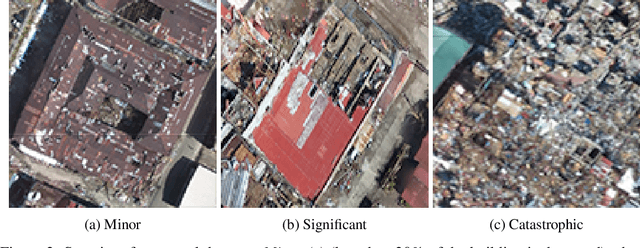
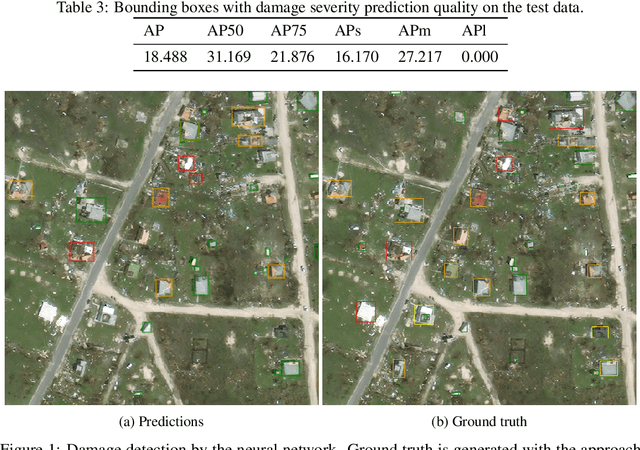
Abstract:High-resolution satellite imagery available immediately after disaster events is crucial for response planning as it facilitates broad situational awareness of critical infrastructure status such as building damage, flooding, and obstructions to access routes. Damage mapping at this scale would require hundreds of expert person-hours. However, a combination of crowdsourcing and recent advances in deep learning reduces the effort needed to just a few hours in real time. Asking volunteers to place point marks, as opposed to shapes of actual damaged areas, significantly decreases the required analysis time for response during the disaster. However, different volunteers may be inconsistent in their marking. This work presents methods for aggregating potentially inconsistent damage marks to train a neural network damage detector.
Echo State Networks for Reinforcement Learning
Feb 11, 2021



Abstract:Echo State Networks (ESNs) are a type of single-layer recurrent neural network with randomly-chosen internal weights and a trainable output layer. We prove under mild conditions that a sufficiently large Echo State Network (ESN) can approximate the value function of a broad class of stochastic and deterministic control problems. Such control problems are generally non-Markovian. We describe how the ESN can form the basis for novel (and computationally efficient) reinforcement learning algorithms in a non-Markovian framework. We demonstrate this theory with two examples. In the first, we use an ESN to solve a deterministic, partially observed, control problem which is a simple game we call `Bee World'. In the second example, we consider a stochastic control problem inspired by a market making problem in mathematical finance. In both cases we can compare the dynamics of the algorithms with analytic solutions to show that even after only a single reinforcement policy iteration the algorithms perform with reasonable skill.
Mining and Tailings Dam Detection In Satellite Imagery Using Deep Learning
Jul 02, 2020



Abstract:This work explores the combination of free cloud computing, free open-source software, and deep learning methods to analyse a real, large-scale problem: the automatic country-wide identification and classification of surface mines and mining tailings dams in Brazil. Locations of officially registered mines and dams were obtained from the Brazilian government open data resource. Multispectral Sentinel-2 satellite imagery, obtained and processed at the Google Earth Engine platform, was used to train and test deep neural networks using the TensorFlow 2 API and Google Colab platform. Fully Convolutional Neural Networks were used in an innovative way, to search for unregistered ore mines and tailing dams in large areas of the Brazilian territory. The efficacy of the approach is demonstrated by the discovery of 263 mines that do not have an official mining concession. This exploratory work highlights the potential of a set of new technologies, freely available, for the construction of low cost data science tools that have high social impact. At the same time, it discusses and seeks to suggest practical solutions for the complex and serious problem of illegal mining and the proliferation of tailings dams, which pose high risks to the population and the environment, especially in developing countries. Code is made publicly available at: https://github.com/remis/mining-discovery-with-deep-learning.
Uncertainty propagation in neural networks for sparse coding
Nov 29, 2018

Abstract:A novel method to propagate uncertainty through the soft-thresholding nonlinearity is proposed in this paper. At every layer the current distribution of the target vector is represented as a spike and slab distribution, which represents the probabilities of each variable being zero, or Gaussian-distributed. Using the proposed method of uncertainty propagation, the gradients of the logarithms of normalisation constants are derived, that can be used to update a weight distribution. A novel Bayesian neural network for sparse coding is designed utilising both the proposed method of uncertainty propagation and Bayesian inference algorithm.
BCCNet: Bayesian classifier combination neural network
Nov 29, 2018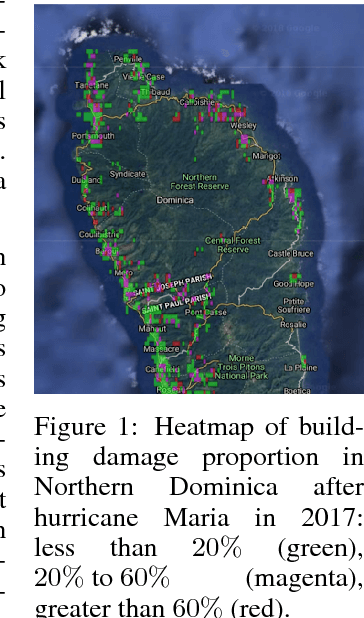
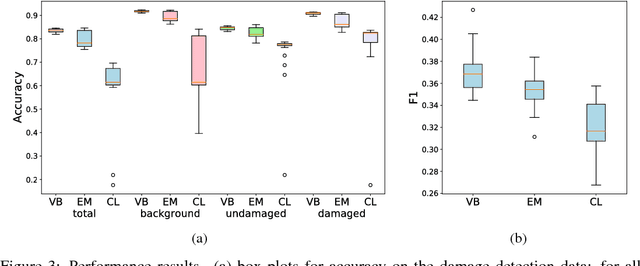
Abstract:Machine learning research for developing countries can demonstrate clear sustainable impact by delivering actionable and timely information to in-country government organisations (GOs) and NGOs in response to their critical information requirements. We co-create products with UK and in-country commercial, GO and NGO partners to ensure the machine learning algorithms address appropriate user needs whether for tactical decision making or evidence-based policy decisions. In one particular case, we developed and deployed a novel algorithm, BCCNet, to quickly process large quantities of unstructured data to prevent and respond to natural disasters. Crowdsourcing provides an efficient mechanism to generate labels from unstructured data to prime machine learning algorithms for large scale data analysis. However, these labels are often imperfect with qualities varying among different citizen scientists, which prohibits their direct use with many state-of-the-art machine learning techniques. We describe BCCNet, a framework that simultaneously aggregates biased and contradictory labels from the crowd and trains an automatic classifier to process new data. Our case studies, mosquito sound detection for malaria prevention and damage detection for disaster response, show the efficacy of our method in the challenging context of developing world applications.
Spatio-Temporal Structured Sparse Regression with Hierarchical Gaussian Process Priors
Jul 15, 2018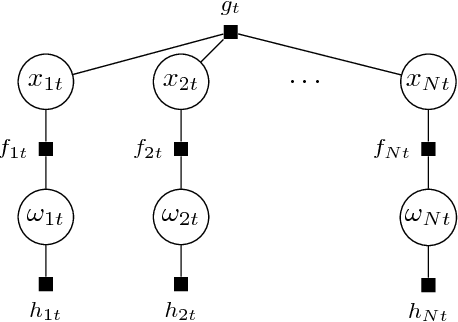
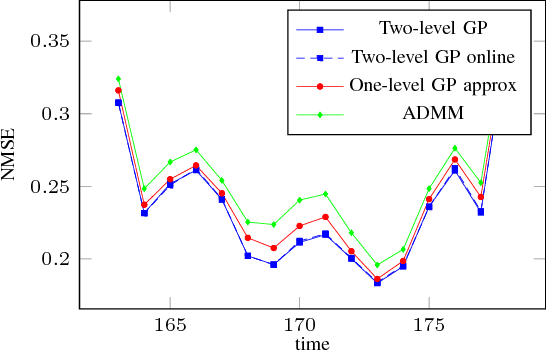
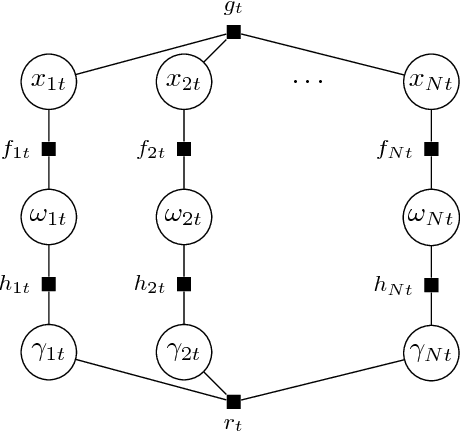
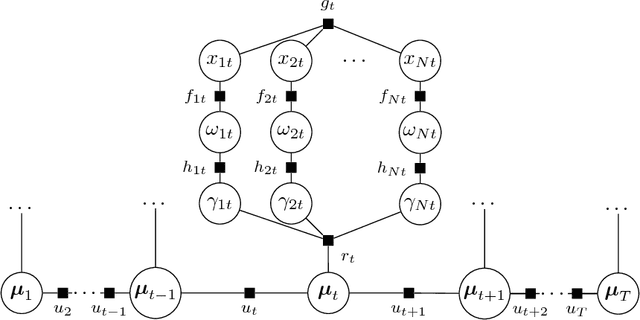
Abstract:This paper introduces a new sparse spatio-temporal structured Gaussian process regression framework for online and offline Bayesian inference. This is the first framework that gives a time-evolving representation of the interdependencies between the components of the sparse signal of interest. A hierarchical Gaussian process describes such structure and the interdependencies are represented via the covariance matrices of the prior distributions. The inference is based on the expectation propagation method and the theoretical derivation of the posterior distribution is provided in the paper. The inference framework is thoroughly evaluated over synthetic, real video and electroencephalography (EEG) data where the spatio-temporal evolving patterns need to be reconstructed with high accuracy. It is shown that it achieves 15% improvement of the F-measure compared with the alternating direction method of multipliers, spatio-temporal sparse Bayesian learning method and one-level Gaussian process model. Additionally, the required memory for the proposed algorithm is less than in the one-level Gaussian process model. This structured sparse regression framework is of broad applicability to source localisation and object detection problems with sparse signals.
Ensemble Kalman Filtering for Online Gaussian Process Regression and Learning
Jul 09, 2018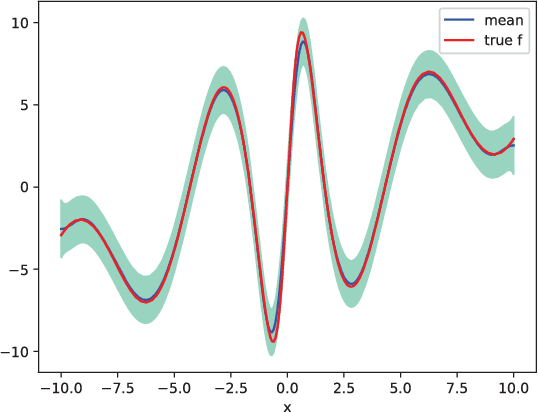
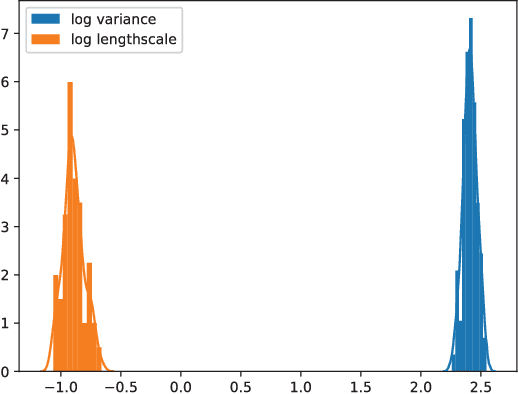

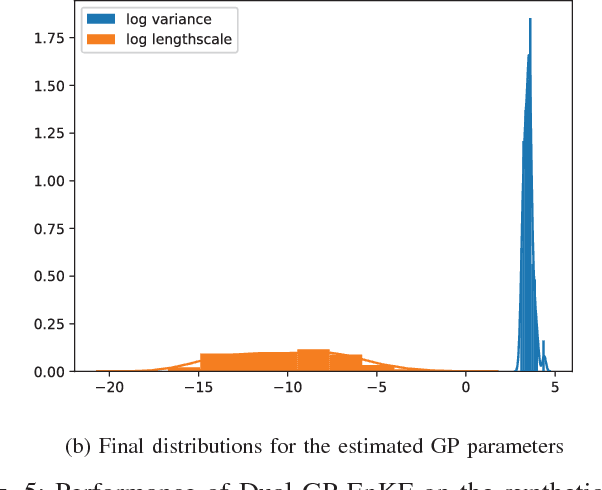
Abstract:Gaussian process regression is a machine learning approach which has been shown its power for estimation of unknown functions. However, Gaussian processes suffer from high computational complexity, as in a basic form they scale cubically with the number of observations. Several approaches based on inducing points were proposed to handle this problem in a static context. These methods though face challenges with real-time tasks and when the data is received sequentially over time. In this paper, a novel online algorithm for training sparse Gaussian process models is presented. It treats the mean and hyperparameters of the Gaussian process as the state and parameters of the ensemble Kalman filter, respectively. The online evaluation of the parameters and the state is performed on new upcoming samples of data. This procedure iteratively improves the accuracy of parameter estimates. The ensemble Kalman filter reduces the computational complexity required to obtain predictions with Gaussian processes preserving the accuracy level of these predictions. The performance of the proposed method is demonstrated on the synthetic dataset and real large dataset of UK house prices.
Learning Methods for Dynamic Topic Modeling in Automated Behaviour Analysis
Sep 18, 2017



Abstract:Semi-supervised and unsupervised systems provide operators with invaluable support and can tremendously reduce the operators load. In the light of the necessity to process large volumes of video data and provide autonomous decisions, this work proposes new learning algorithms for activity analysis in video. The activities and behaviours are described by a dynamic topic model. Two novel learning algorithms based on the expectation maximisation approach and variational Bayes inference are proposed. Theoretical derivations of the posterior of model parameters are given. The designed learning algorithms are compared with the Gibbs sampling inference scheme introduced earlier in the literature. A detailed comparison of the learning algorithms is presented on real video data. We also propose an anomaly localisation procedure, elegantly embedded in the topic modeling framework. The proposed framework can be applied to a number of areas, including transportation systems, security and surveillance.
 Add to Chrome
Add to Chrome Add to Firefox
Add to Firefox Add to Edge
Add to Edge